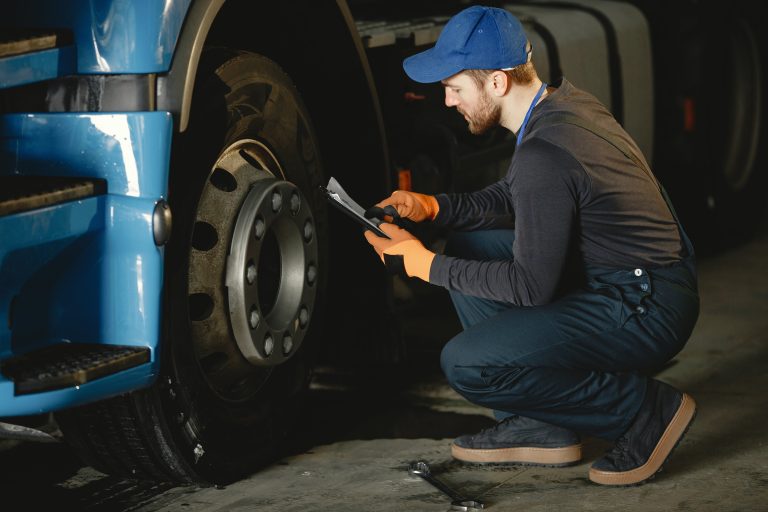Understanding the ELD Mandate and HOS Regulations
The landscape of fleet management and regulatory compliance has undergone significant changes with the introduction and enforcement of the Electronic Logging Device (ELD) mandate, coupled with Hours of Service (HOS) regulations. These measures have been instituted to ensure safety on the roads by keeping track of driving hours, rest periods, and vehicle operation. In this extensive guide, we will explore the intricacies of the ELD mandate, delve into the HOS regulations, and discuss the supporting documents required for compliance.
The ELD Mandate: Revolutionizing Logbooks
What Is an ELD?
An Electronic Logging Device (ELD) is a DOT-certified electronic system that records a driver’s driving time and hours of service automatically. It is designed to create a safer work environment for drivers and make it quicker and easier to accurately track, manage, and share records of duty status (RODS).
The ELD Mandate Overview
The ELD mandate is a federal regulation requiring the use of ELDs by commercial drivers who are required to prepare hours-of-service (HOS) records of duty status (RODS). This mandate came into full effect on December 18, 2017, with a phase-in period that allowed for a transition from paper logs or logging software to ELDs.
Key Components of the ELD Mandate
The mandate includes specific requirements for ELD functionality and data transfer methods, ensuring that devices are tamper-resistant and that information can be transmitted to law enforcement in certain formats upon request.
HOS Regulations: Ensuring Driver Safety and Compliance
Understanding HOS Basics
HOS regulations are designed to eliminate the type of drowsiness that can lead to crashes. The rules set maximum driving times and minimum off-duty times for truck and bus drivers.
Key HOS Rules
- The 14-Hour Rule: This rule allows drivers to be on-duty for 14 consecutive hours after coming on-duty following 10 consecutive hours off-duty. However, drivers can only drive for a total of 11 hours within this 14-hour window.
- The 70-Hour Rule: Drivers are allowed to work 70 hours in an 8-day period before they must take a 34-hour reset.
- The 8-Hour Rule: Drivers must take a 30-minute break after 8 hours of driving time.
ELD Recap Hours and Sleeper Berth Provisions
The Concept of Recap Hours
Recap hours, in the context of ELDs, refer to the practice of “recapping” or recovering driving time by keeping track of the rolling 7- or 8-day period under the 70-hour rule. Drivers use this method to maximize their available hours by “recapping” hours from earlier in the week that fall beyond the rolling period.
Sleeper Berth Rules
The sleeper berth provision allows drivers to split their required 10 hours off-duty into two periods. This split-sleeper berth rule is designed to offer flexibility for drivers to manage fatigue. One off-duty period, whether in or out of the sleeper berth, must be at least 2 hours long. The other must involve at least 7 consecutive hours spent in the sleeper berth. The two rest periods must total at least 10 hours. When using the sleeper berth provision, neither time period counts against the 14-hour driving window, allowing drivers to extend the window within which they can drive.
Navigating ELD Hours and Mandate Regulations
ELD Driving Hours: Maximizing Efficiency
ELD driving hours refer to the actual time spent driving and are a critical part of HOS compliance. ELDs make it easier for drivers to maximize their allowable drive time while ensuring they do not exceed HOS limits.
ELD HOS Rules: An Overview
ELD HOS rules are set forth by the FMCSA to ensure that drivers are complying with the mandated driving hours and rest periods. These rules are automatically recorded by the ELD, which helps to prevent errors and reduce HOS violations.
Electronic Logging Devices and HOS Supporting Documents
The Role of Supporting Documents
The FMCSA requires certain supporting documents to be maintained by drivers and carriers to verify on-duty time. These may include bills of lading, dispatch records, or expense receipts. ELDs work in tandem with these documents to provide a comprehensive and auditable account of the driver’s HOS compliance.
The Specifics of the ELD 14, 70, and 8 Hour Rules
The ELD 14 Hour Rule
This rule is a cornerstone of HOS regulations, mandating that once a driver starts their day, they have a window of 14 consecutive hours to complete up to 11 hours of driving. ELDs ensure that drivers adhere to this rule by providing real-time tracking of driving time and on-duty status.
The ELD 70 Hour Rule
This weekly limit helps prevent fatigue by restricting the total on-duty time over an 8-day period to 70 hours. After reaching this limit, drivers are required to take a 34-hour reset to start a new 70-hour period.
The ELD 8 Hour Rule
The 8-hour rule mandates that drivers take a 30-minute break after 8 cumulative hours of driving. This break is crucial for maintaining alertness and safety on the road.
ELD Exemptions and Updates
While most commercial drivers are subject to the ELD mandate, there are certain exemptions in place, such as those for drivers operating vehicles older than model year 2000, and those who maintain driving logs for 8 days or fewer in a 30-day rolling period. It’s essential for drivers and carriers to stay informed about such exemptions and any updates to regulations.
ELD Mandate Hours of Service: Critical Updates
Over the years, there have been updates to the ELD mandate HOS, including changes to the 30-minute rest break requirement and modifications to the sleeper berth provision. Keeping abreast of these changes is crucial for compliance and operational efficiency.
FMCSA ELD Exemptions 2021
In 2021, the FMCSA issued exemptions to the ELD mandate for certain situations and extended the compliance dates for specific types of carriers. These are periodically reviewed and can change, so continuous monitoring of FMCSA announcements is necessary.
FMCSA Logging Rules
The Federal Motor Carrier Safety Administration (FMCSA) sets the logging rules that govern the recording of HOS. These rules stipulate what must be logged, how it should be done, and the retention period for HOS records.
This comprehensive guide is designed to provide a foundational understanding of the ELD mandate and HOS regulations. For the most current information and regulations, please refer to the official FMCSA website or consult with a compliance expert.
It is essential for carriers and drivers to regularly check the FMCSA website for the most current ELD exemptions and logging rules. Compliance with these regulations not only ensures legal operation but also promotes safety on the road for all users.
Conclusion
As the trucking industry continues to evolve with technological advancements, the ELD mandate and HOS regulations remain pivotal in promoting road safety and operational efficiency. Understanding and adhering to these rules can help prevent HOS violations, reduce driver fatigue, and ultimately save lives. Carriers and drivers who invest in compliance are investing in the future of safe and efficient transportation.
For more information on the ELD mandate and HOS regulations, please consult the official FMCSA website or contact a transportation compliance specialist.







